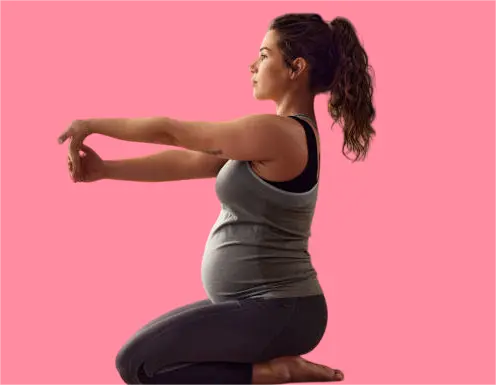During pregnancy, a woman's body undergoes tremendous changes to provide a suitable environment for the fetus's growth. Among these natural changes, fluid retention is a common symptom.
This occurs as a result of hormonal changes and an increase in blood and fluid volume in the body. It can cause discomfort for the mother, although it is normal in most cases.
What is fluid retention during pregnancy?
Fluid retention is the accumulation of water in the body's tissues, leading to swelling, especially in the extremities. It often begins in the second or third trimester of pregnancy and is medically known as edema of pregnancy.
Causes of fluid retention during pregnancy

Several factors contribute to this condition, some of which are natural and some related to lifestyle, including:
- Hormonal changes, such as increased progesterone.
- The uterus presses on major veins, slowing blood flow.
- Excessive sodium intake.
- Prolonged standing or sitting.
Areas most susceptible to swelling
Not all parts of the body are affected by fluid retention in the same way. The most susceptible areas are:
- Feet and ankles.
- Hands and fingers.
- The face, especially around the eyes.
- Legs.
The difference between normal and dangerous swelling
Not all cases of swelling are worrisome, but some require medical attention, as follows:
- Normal swelling is gradual and subsides with rest.
- Sudden or excessive swelling may indicate problems such as preeclampsia.
- If it is accompanied by high blood pressure, headaches, or blurred vision, medical advice should be sought immediately.
The impact of fluid retention on movement and rest
Fluid retention can affect a pregnant woman's daily lifestyle, such as:
- A feeling of heaviness in the legs and feet.
- Difficulty wearing shoes.
- Inability to stand or walk for long periods.
- Increased feelings of fatigue.
The relationship between nutrition and fluid retention
What a pregnant woman eats can directly affect the amount of fluid retained in her body, as:
- Eating foods high in salt increases swelling.
- Drinking adequate amounts of water helps reduce retention.
- Foods rich in potassium, such as bananas and potatoes, help maintain balance.
- Reducing caffeine intake reduces the aggravation of the problem.
How Daily Habits Affect Fluid Retention
Daily lifestyle plays an important role in controlling swelling caused by fluid retention, including:
- Resting with your feet elevated reduces swelling.
- Avoid prolonged standing whenever possible.
- Wear loose clothing and supportive medical stockings.
- Avoid sitting with your legs crossed.
When is fluid retention an indicator of a health problem?
Some symptoms associated with swelling may indicate a medical condition that requires medical intervention, such as:
- Rapid or sudden swelling of the face or hands.
- High blood pressure.
- Severe headache or blurred vision.
- Abdominal pain or shortness of breath.
- These may be signs of preeclampsia.
Exercises to Reduce Fluid Retention During Pregnancy

Physical activity helps stimulate blood circulation and reduce swelling by:
- Gritzy daily walking for 20–30 minutes.
- Stretching exercises or yoga suitable for pregnant women.
- Elevating your feet on a pillow while resting.
- Moving your ankles and feet periodically while sitting.
Article Summary
Fluid retention during pregnancy is a normal occurrence that occurs as a result of physiological changes in the body, such as increased blood volume and pressure on blood vessels.
Its effects are primarily felt in the extremities and may cause discomfort and fatigue. A balanced diet, gentle exercise, and regular rest can control this condition and reduce its symptoms. If sudden or severe symptoms appear, a doctor should be consulted to rule out serious health conditions such as preeclampsia.